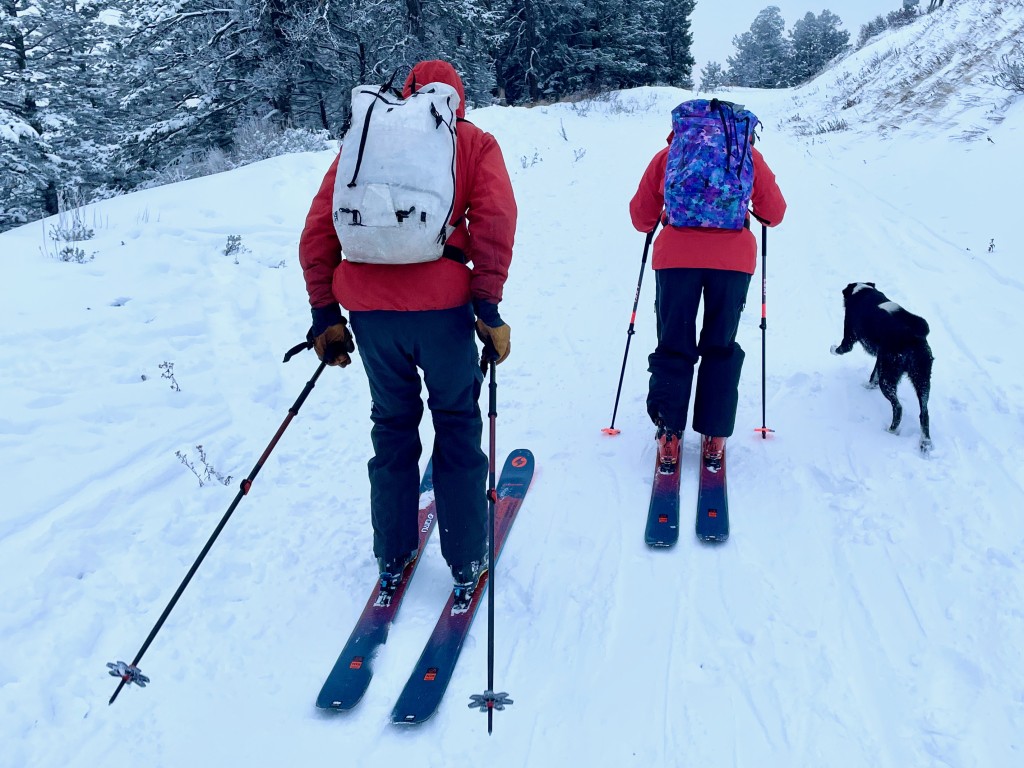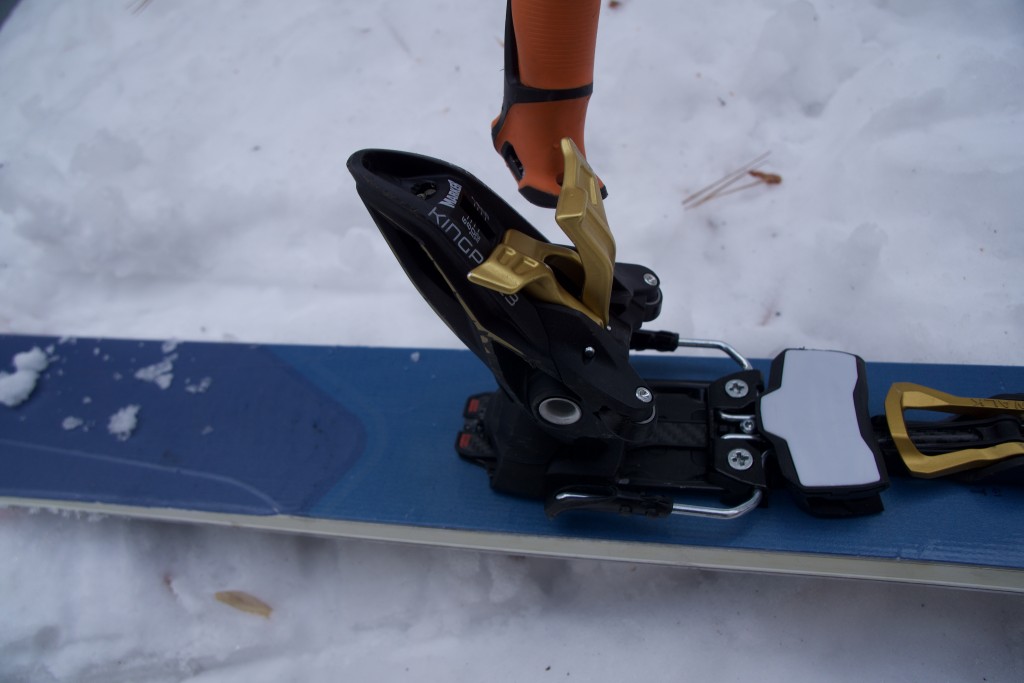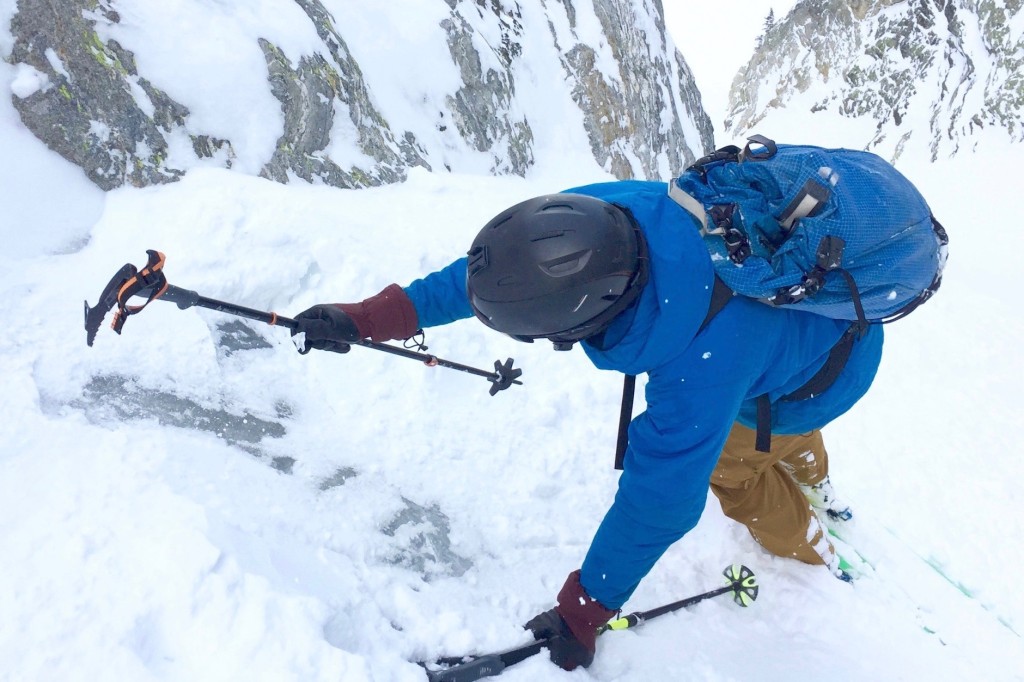We tested these poles over weeks and weeks of backcountry skiing in all kinds of conditions and terrain in Wyoming, Colorado, and California. We took them on ski tours varying from morning jaunts to all-day epics. We also used most of these poles inbounds to test versatility for resort riding. From banging bumps at the resort to providing stability on steep, icy skin tracks, these poles went through the wringer in order for our testing to be thorough and accurate. Our single-plank testers took each compatible pole out into the field to deliver splitboard-specific insight. We looked for comfortable handling, plenty of length adjustment, durability, useful features, and low weight.
Comfort
To test for comfort, we scrutinized each pole's grip, handle, swing weight, and pole straps. We swapped poles on the skin track between testers and skied with one pole in each hand to find the most comfortable poles to use. We looked at grip curvature, strap design, the top of the handle, secondary grips, and we assessed swing weight. We used thick gloves, standard gloves, and bare hands on each pole's grip to ensure comfort across a wide range of weather and use conditions. After touring extensively with each pole, we had a nuanced idea of how the poles stacked up against each other.
Length Adjustment
Each pole comes with a certain amount of manufacturer-reported length adjustment, often denoted by length markings on the adjustable shaft. We checked these lengths for accuracy, and also tested the pole for stability at the shortest, middle, and longest possible lengths. We also scrutinized the locking mechanisms and lever locks that allow poles to extend and retract, making sure that they could be field-tightened and that they successfully held the pole's length without slipping.
Durability
Backcountry ski poles take a beating, and we were rough on these poles to ensure that they could last. We didn't hesitate to whack snow off of tree branches on the skin track, to throw the poles into the backs of pickup trucks, to slam them into bumps while skiing at the resort, and to whack snow off the top sheets of our skis. You may not be as harsh on the poles as we were, but we erred on the side of caution to make sure we found any durability concerns.
Features
Good backcountry ski poles have useful features that make life easier on the skin track. We made sure that the powder baskets actually provided floatation by breaking trail to access the goods. We checked the secondary grips by choking up on the poles when sidehilling, and looked for any special features on the grip handle that could help lock bindings, scrape snow off skis, or allow for releasable wrist straps. We also made sure wrist straps could be adjusted easily with gloved hands.
Splitboarders need poles that can collapse to a small packed size for the downhill part of the day. Some splitboarders like three-section telescoping poles because of their strength, and these users stow their poles on the outside of their packs for the downhill. Other splitboarders prefer collapsible poles that fold up to an even smaller size for stowing inside a pack. Our splitboarders put these two kinds of poles to the test, and provided excellent feedback regarding packed size and collapsibility.
Ski pole/ice axe hybrid poles have seen a surge in popularity in the backcountry, often seen as a suitable replacement for an ice axe in steep terrain, saving weight for the user. We used each of these poles in firm conditions while skiing tight, steep couloirs, and judged how well each pick digs into the snow and arrests a slip. We also found water ice to see how each pick holds in ice.
Weight
This was a simple category to measure. We simply weighed each pair of poles, and the poles with the lowest weights received the highest scores. We looked deeper into each pole's construction to figure out where the weight comes from, and made notes about design components that allow for low weights.








